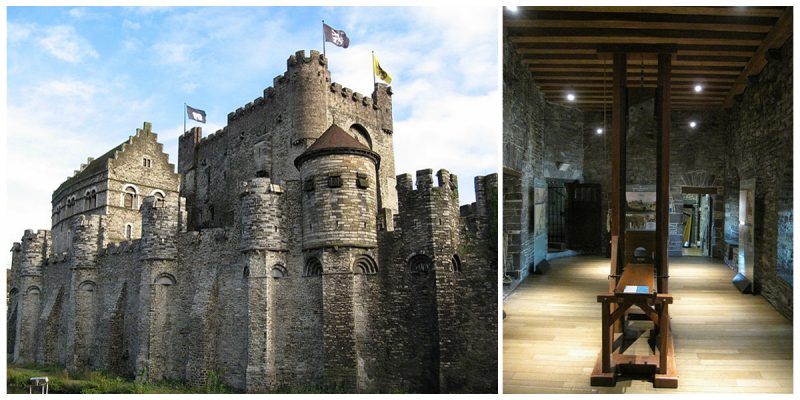The Gravensteen, also known as the “Castle of the Count,“ is a castle in Ghent, originating from the Middle Ages. The castle served as the seat of the Counts of Flanders until they abandoned the place in the 14th century.
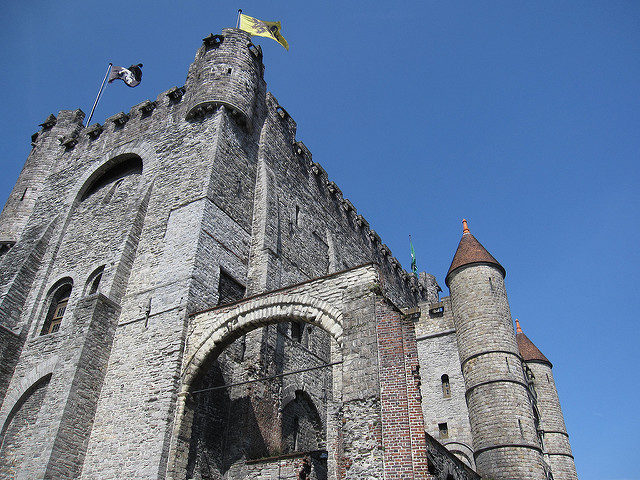
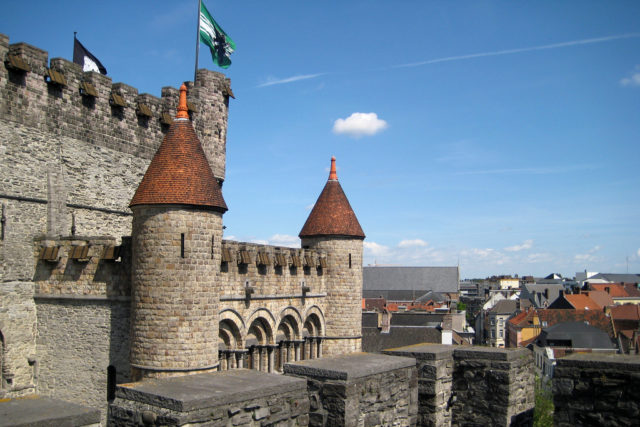
The present castle was built in the late 12th century by The Count of Flanders Philip of Alsace, son of Count Thierry of Alsace (1128–1168), as a defensive fortress and it was modeled after the crusaders castles that Philip of Alsace encountered while he participated in the second crusade.
Before its construction, there stood a wooden castle on the same location, presumably built in the 10th century. After his death, the castle quickly developed from a defensive outpost to a luxury residence for the Counts of Flanders.
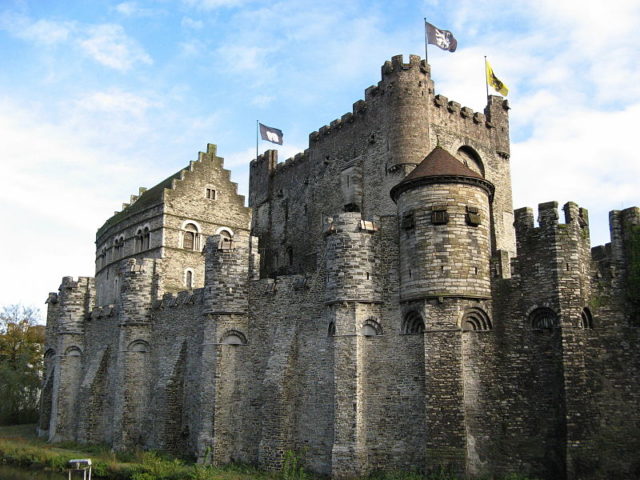

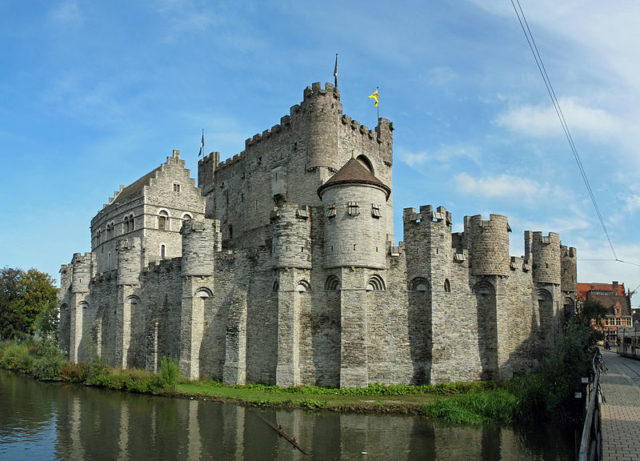
In the early 19th century, the castle was used as a prison, a courthouse, and, at one time, it even served as an industrial complex. Several of the vacated buildings were publicly sold. Houses were built against the walls and even on the courtyard and the stones of the walls were used to erect other buildings. The existing buildings housed cotton mills, a metal construction workshop and some fifty working-class families.
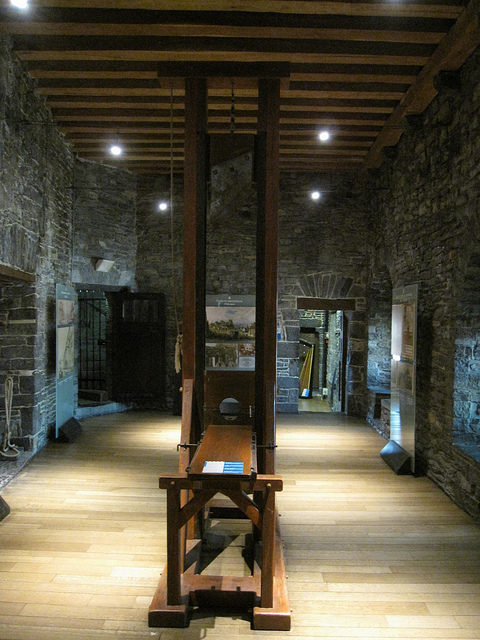
At the end of the 19th century, the castle was scheduled to be demolished, but, fortunately, the project fell through due to a lack of interest. At that time, the inhabitants of Ghent saw the Gravensteen as a symbol of power abuse, feudal oppression, gruesome torturing techniques and inquisition.
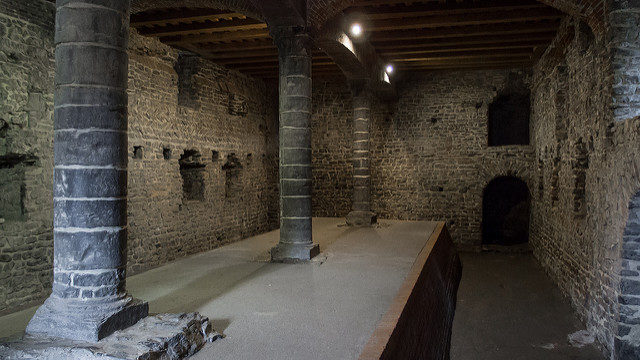
After many other uses, it was purchased by the town to save it from demolition and fully restored. In 1885 the city of Ghent bought the castle and started a renovation project. Restoration work started in 1893. The newly built houses were removed and the walls and keep were restored to their original condition.
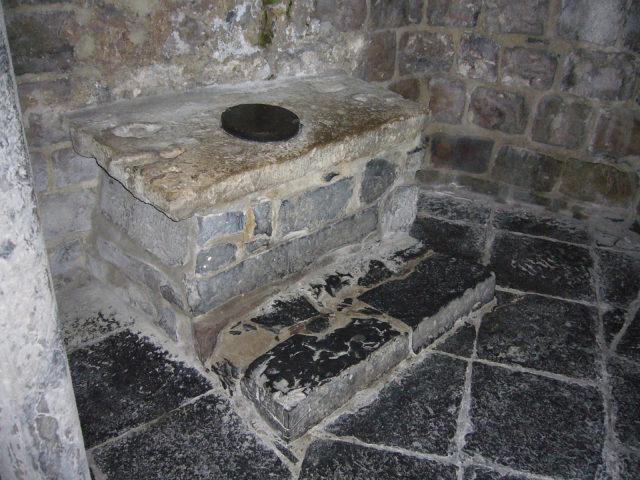
In the early 20th century, it was restored to its medieval grandeur and it opened to the public in 1907. Inside is a museum with various torture devices (and a guillotine among others) that were historically used in Ghent. The historical collection of arms kept at the Gravensteen is among the most exquisite collections in Flanders and each type of weapon used in medieval warfare is featured in the collection.
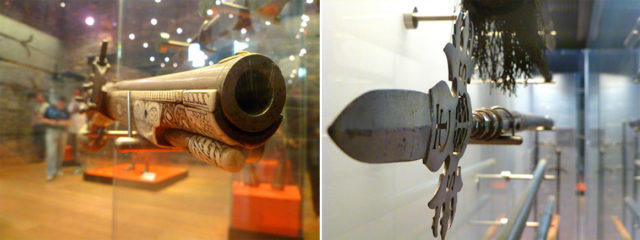
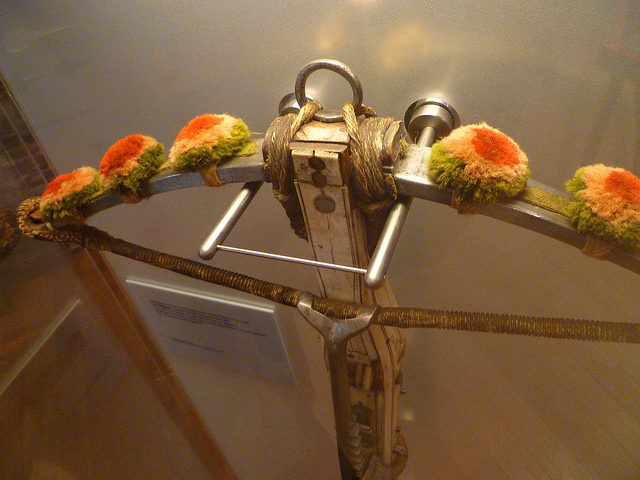
Since the 1913 World Fair in Ghent, numerous cultural activities, events and parties have been held at the Gravensteen, which is now the city’s single most important tourist attraction. The collection is now divided into four main sections: imprisonment, the insane, torture and interrogation and execution and punishment.
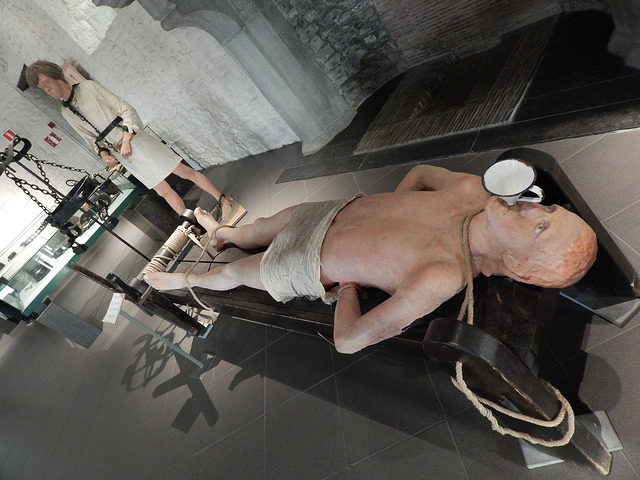
Belgium has over 3,000 castles, about 300 of which are open to the public. Gravensteen is open daily throughout the year with an average of 2,000 visitors a day.
